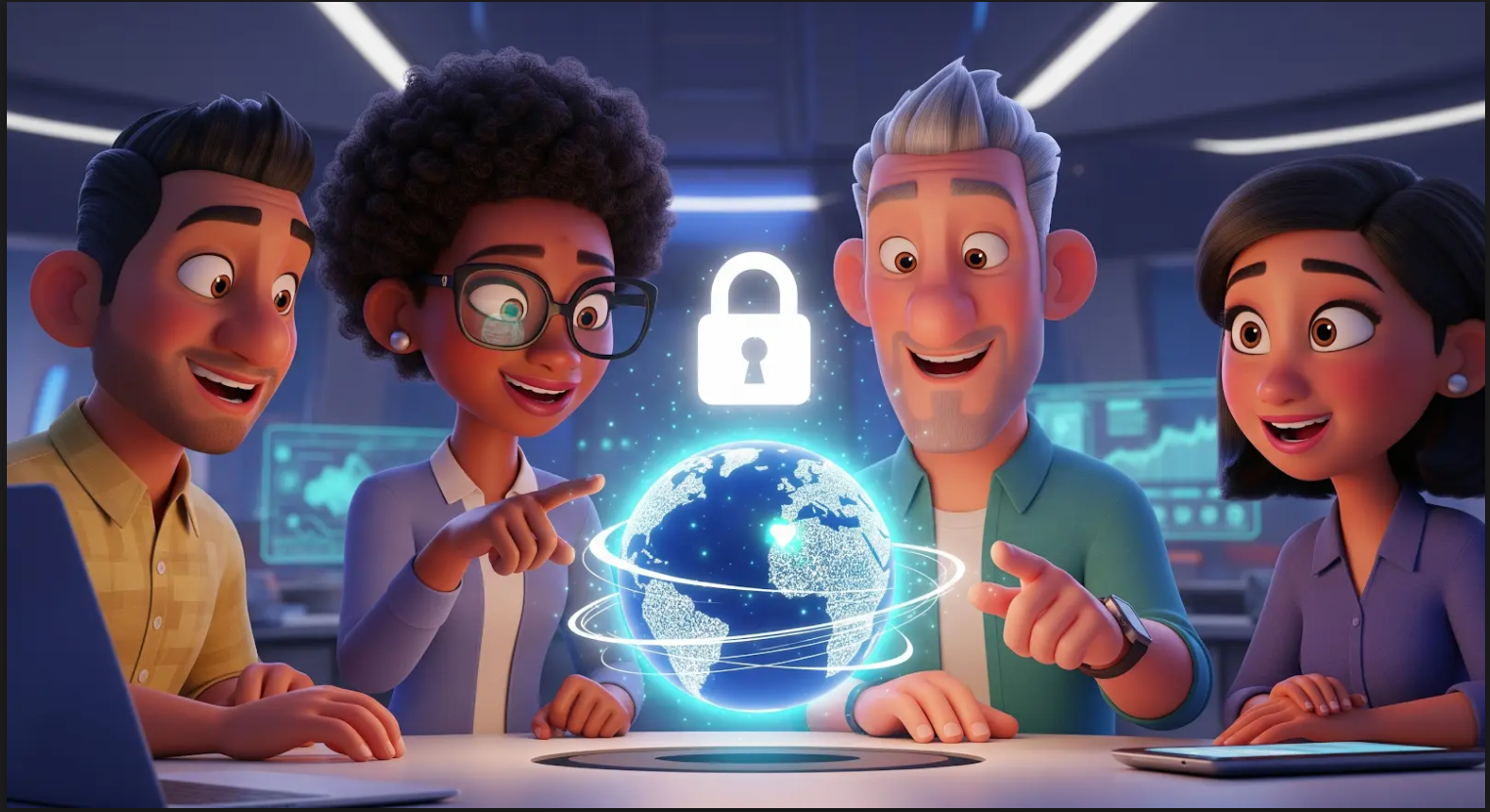Introduction
The global film and television landscape has never been more interconnected.
Driven by the universal appeal of compelling storytelling, diverse cultural perspectives, and increasingly complex financing models, cross-border co-productions have become a cornerstone of content creation.
They offer access to new markets, talent, locations, and often, crucial financial incentives. However, beneath the promise of collaborative synergy lies a labyrinth of legal complexities, particularly concerning Intellectual Property (IP) rights.
For industry professionals venturing into these international waters, understanding and meticulously managing IP is not merely a legal formality; it is the bedrock of future commercial success and the ultimate safeguarding of creative endeavors.
Understanding the IP Landscape in Film and Television
At its core, IP in film and television primarily revolves around copyright. This legal right protects original literary, dramatic, musical, and artistic works. For a film or TV series, copyright extends to the screenplay, musical score, cinematography, and ultimately, the finished audiovisual work itself.
Beyond copyright, trademarks might protect titles, logos, or unique character names, while moral rights (prevalent in civil law jurisdictions) grant creators certain inalienable rights, such as the right of attribution and the right to object to derogatory treatment of their work, regardless of who owns the economic rights.
Underlying rights, such as the rights to a novel, comic book, or historical event upon which the production is based, are also crucial and must be meticulously cleared and transferred.
The challenge in co-productions stems from the inherent territoriality of IP laws. Copyright protection granted in one country does not automatically extend globally. While international treaties like the Berne Convention for the Protection of Literary and Artistic Works provide a foundational framework for reciprocal recognition among signatory countries, they do not homogenize national laws. Each country still has its own nuances regarding registration, duration, enforcement, and the specifics of rights assigned to various contributors (e.g., director as author vs. producer as author). This patchwork of regulations demands a sophisticated understanding and proactive strategy.
Key IP Challenges in Cross-Border Co-Productions
- Ownership Splits and Allocation: This is perhaps the most contentious area. Who owns the master copyright in the final film? Is it jointly owned equally, or proportional to financial contribution? How are individual components (e.g., soundtrack rights, remake rights, sequel rights) allocated? Jurisdictional differences in defining authorship (e.g., director as primary author in France vs. producer as owner in the U.S.) add layers of complexity.
- Moral Rights vs. Economic Rights: In civil law countries (like many in Europe), moral rights are often inalienable and can’t be waived, giving creators significant control over how their work is used and presented, even after economic rights are transferred. This can clash with the more producer-centric economic rights models prevalent in common law countries (like the U.S. or UK), where rights can often be fully assigned. Harmonizing these approaches within a single agreement is crucial.
- Chain of Title Integrity: Every single link in the chain of rights, from the original concept to the finished film, must be meticulously documented and cleared. In a co-production, this means ensuring that all contributing parties, from writers and composers to underlying rights holders in multiple countries, have properly assigned or licensed their rights to the co-producing entities. A single missing link, especially across borders, can jeopardize distribution and invite litigation.
- Exploitation Rights and Recoupment: Defining how the finished product will be exploited across different territories, languages, and platforms (theatrical, TV, VOD, merchandising) is paramount. This involves not only who has the right to exploit but also how revenues are shared and how recoupment of investments is structured, particularly when different partners have invested different amounts or are responsible for exploitation in specific territories.
- Governing Law and Dispute Resolution: Deciding which country’s laws will govern the co-production agreement and how disputes will be resolved (e.g., arbitration in a neutral jurisdiction like London or Geneva, or litigation in a specific national court) is critical. This choice significantly impacts how IP disputes will be adjudicated and enforced.
Best Practices for Robust IP Protection
Successfully navigating these complexities requires foresight, meticulous planning, and robust legal frameworks.
- Comprehensive Co-Production Agreement: This is the absolute cornerstone. The agreement must explicitly and exhaustively detail every aspect of IP ownership, exploitation, and protection. Key clauses should include:
- Clear IP Ownership: Define precisely who owns what percentage of which rights (e.g., master copyright, underlying rights, derivative rights).
- Rights Assignment/License: Detail how all rights from writers, directors, composers, and other creative personnel are assigned or licensed to the co-producers.
- Territorial and Platform Exploitation: Specify which co-producer has rights to exploit the work in which territories and on which platforms, and how revenues will be shared.
- Moral Rights Waivers/Consents: Address moral rights in accordance with relevant national laws, seeking waivers or obtaining necessary consents where permissible.
- Representations and Warranties: Ensure each party warrants that they own or have secured all necessary rights they are contributing, and that the project does not infringe on third-party IP.
- Indemnification: Include clauses for indemnification against IP infringement claims.
- Dispute Resolution: Mandate clear mechanisms for resolving disputes, preferably through mediation or arbitration in a neutral venue before resorting to litigation.
- Governing Law and Jurisdiction: Explicitly state the chosen law to govern the agreement and the jurisdiction for legal actions.
- Meticulous Chain of Title Documentation: Create a detailed chain of title report that traces every IP right from its origin to the co-production entity. This includes all options, assignments, licenses, and releases. Each document must be legally sound in its country of origin and duly executed.
- Early and Explicit IP Discussions: IP issues should be among the very first discussions between co-production partners, not an afterthought. Addressing potential conflicts early can save significant time, money, and creative friction down the line.
- Thorough Due Diligence: Conduct comprehensive due diligence on all co-production partners, not just their financial standing, but also their track record with IP and any pre-existing encumbrances on their contributions.
- Strategic IP Registration: While copyright automatically vests upon creation in most Berne Convention countries, registering the copyright in key territories (e.g., the U.S. Copyright Office) can provide additional legal advantages, such as statutory damages and attorney’s fees in infringement cases. Registering trademarks for titles or logos is also advisable.
- Seek Specialized Legal Counsel: Engaging IP attorneys with expertise in international entertainment law and specific experience in cross-border co-productions is non-negotiable. They can help navigate the nuances of different legal systems and draft robust agreements.
Conclusion: The Art of Collaborative Safeguarding
Cross-border co-productions represent the exciting future of global storytelling.
They are complex endeavors that require not just creative vision and financial acumen, but also a sophisticated understanding of international IP law.
By prioritizing robust IP clauses within co-production agreements, conducting thorough due diligence, maintaining impeccable chain of title documentation, and seeking expert legal advice from the outset, producers can transform potential legal minefields into well-charted territories.
Ultimately, safeguarding intellectual property is safeguarding the creative integrity, commercial viability, and enduring legacy of a global cinematic or television work, ensuring that the fruit of collaborative labor benefits all involved for generations to come.















































